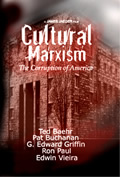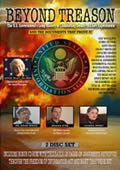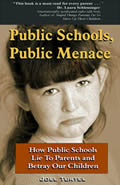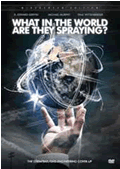By
Michael LeMieux
November 12, 2010
NewsWithViews.com
The ancient Chinese curse, “May you live in an interesting age,”[1] is upon us. We are currently living in a time, future generations will teach, that will either be the defining moment to the destruction of America or its salvation. Not from extremist attacks, nuclear war, or domination by another world super power, but from within the halls of Congress and their defiance of Constitutional boundaries.
Financially, 1913 ushered in what would lead to our current global nightmare. Much has been written concerning these events and I will not focus greatly on this in this article, but would like to discuss the movement from sound, constitutional, money to the current fiat currency we currently are enslaved too.
Constitutionally, money has a specific meaning and directs those who have the responsibility concerning it. Article 1, Section 8, states that Congress is: “To coin Money, regulate the Value thereof, and of foreign Coin, and fix the Standard of Weights and Measures. To Provide for the Punishment counterfeiting and Securities and current Coin of the United States.” Article 1, Section 10, declares a prohibition on the states to: “…coin money; emit Bills of Credit; make any Thing but gold and silver Coin a Tender in Payment of Debts…”
Nowhere in the Constitution is there a clause that grants the Congress the power to abdicate that responsibility to any other entity. More specifically to grant such power to a private banking consortium whose membership is secret, whose books cannot be fully audited without an act of Congress, and whose chairman is appointed from a list of potential appointees, provided to the President, derived from the board of the Federal Reserve.[2]
So here we have the Congress creating an unconstitutional organization to manage the nation’s money supply, by an unconstitutional grant of power which Congress did not have the authority to grant. So what was the goal in creating this organization?
According to the Federal Reserve:[3]
“The Federal Reserve sets the nation’s monetary policy to promote the objectives of maximum employment, stable prices, and moderate long-term interest rates. The challenge for policy makers is that tensions among the goals can arise in the short run and that information about the economy becomes available only with a lag and may be imperfect.
Goals of Monetary Policy
The goals of monetary policy are spelled out in the Federal Reserve Act, which specifies that the Board of Governors and the Federal Open Market Committee should seek ‘to promote effectively the goals of maximum employment, stable prices, and moderate long-term interest rates.’ Stable prices in the long run are a precondition for maximum sustainable output growth and employment as well as moderate long-term interest rates. When prices are stable and believed likely to remain so, the prices of goods, services, materials, and labor are undistorted by inflation and serve as clearer signals and guides to the efficient allocation of resources and thus contribute to higher standards of living. Moreover, stable prices foster saving and capital formation, because when the risk of erosion of asset values resulting from inflation—and the need to guard against such losses—are minimized, households are encouraged to save more and businesses are encouraged to invest more.”
The Federal Reserve was created during a time of volatile markets and a series of boom and bust recessions. Part of the rationale for the Fed was to stop this cycle and create a mechanism to ensure these things did not happen, and for a short time it did.
Remember the roaring 20’s? Money started to flow better, confidence in the market was high, and money was becoming easier to get. But following the boom of the 1920’s came the worst recession and ultimately the worst depression, up until that time. All with the Federal Reserve at the helm! The very thing that the Fed was instituted to prevent was made worse because of the Federal Reserve policies.
Since the great depression America has experienced a roller coaster of failed monetary policy that has eroded the value of America’s dollar to the worst financial shape of its history.[4] But when the Fed first took over, America’s currency was still on the gold standard. Even though we had paper bills, they were backed by gold and silver. In fact they were not called notes, as they are today, but were called certificates and were redeemable in either gold or silver.
But today we have “Federal Reserve Notes.” What is a note? According to Black’s Law Dictionary a note is: “A written promise by one party (the maker) to pay money to another party (the payee) or to bearer. “In other words a note is an IOU or a debt instrument. On the other hand a certificate is defined as: “A document in which a fact is formally attested.” In dealing with money the certificate attests to the actual fact that it is worth a specific commodity.
I mentioned “fiat currency” earlier. For those that may not know -- the term “fiat” is defined in Black’s as “An order or decree, especially an arbitrary one.” In other words our currency is money only because the government says it is and that money has no value other than what the government says it has. Black’s goes on to define “fiat money” as: “Paper currency not backed by gold or silver.”
But what many people will find interesting is that Black’s Law Dictionary also defines the meaning of “real money,” that’s right real money – because what we are using is not real money. Real money is: “Money that has metallic or other intrinsic value, as distinguished from paper currency, checks, and drafts.” What we have is currency, government talking heads use this term a lot, not real money.
In essence we have not been using real money in America since President Franklin D. Roosevelt outlawed private gold ownership and confiscated all gold bullion and coin.[5] We then moved into the Bretton Woods era where primarily only governments traded in gold at an agreed upon rate of $35 and ounce, until 1971 when President Nixon ended the practice.[6] We have not had any link between our currency and real money since.
So why does this matter? Because we can no longer pin the value of our currency to something tangible, its worth is only what the confidence in the market says it is worth. Today our currency, though not completely devalued, is at the lowest in modern history. With the recent announcement of Quantitative Easing II (QE2) an additional $600 billion dollars will be dumped into the system. Because the current dollar reflects the value of the American Market, adding additional currency into the pool dilutes the overall value of the dollar and will, by design and intent, create inflationary conditions.[7]
What this means is higher prices for nearly everything we will be purchasing in the near future. This winter is what I have come to call “the winter of discontent,” as many of us who are living paycheck to paycheck will no longer be able to make our paychecks cover the increased costs of food, gas, clothing, etc, but will have to decide between fixed costs, such as our mortgage and the new inflated costs for the products we need to live.
How do we know this is coming? We know based primarily by looking at commodity costs. When any business produces a finished product they must first purchase the base commodities to construct that product. For manufacture of metal parts the company purchases raw steel from which the part is fashioned. Food products in the grocery store are provided by vendors that produce the various products from the raw food items. If these base commodity prices are increased the final product in turn increases in price.
Because there is a lag time between when the products are made and when they end up on our store shelves, the cost is also lagged (in most cases – gas is one exception) until the new product hits the shelf.
Here are a few of the commodity price increases that have occurred recently:[8]
•
Corn is up 17.59%
• Wheat is up 10.37%
• Sugar is up 21.94%
• Cotton is up 15.92%
• Rubber is up 6.53
• Tin is up 9.46%
• Soy Bean costs rose by 4% in one day (Nov 9)
Over the past 12 months we have seen increases anywhere from .03% (Oranges) to over 102% (Iron ore). In turn each product will increase in cost at the register in a comparable percentage. This kind of volatility does not lend to confidence in the market and with the Fed monetizing another 600 billion dollars into our already fragile economy -- further inflation is a certainty.
| Subscribe to the NewsWithViews Daily News Alerts! |
The only thing maintaining value today is real money (Gold and Silver), and as long as we allow our government to steal from the American people and put our children and grand children’s future at risk they will continue to do so until there is nothing left.[9] We must demand the end of the Fed and a return to sound “real money.”
Footnotes:
1,
Frederic R. Coudert, Proceedings
of the Academy of Political Science, 1939
2,
The
Structure of the Federal Reserve System
3,
Overview
of the Federal Reserve System, pdf
4,
Decline
of the US Dollar
5,
The Great Gold
Robbery of 1933
6,
What
Was The Gold Standard?
7,
Bernanke
Sees Case for ‘Further Action’ on Inflation
8,
Commodity
Prices
9,
Rep Tom Perriello “if
you don’t tie our hands, we will keep stealing.”
� 2010 Michael LeMieux - All Rights Reserved
Sign Up For Free E-Mail Alerts
Michael
LeMieux was born in Midwest City, Oklahoma in 1956 and graduated from
Weber State University in Utah with a degree in Computer Science. He
served in both the US Navy and US Army (Active duty and National Guard)
and trained in multiple intelligence disciplines and was a qualified
paratrooper. He served with the 19th Special Forces Group, while in
the National Guard, as a Special Forces tactical intelligence team member.
He served tours to Kuwait and Afghanistan where he received the Purple
Heart for injuries received in combat.
Mr. LeMieux left military duty at the end of 2005 after being medically
discharged with over 19 years of combined military experience. He currently
works as an intelligence contractor to the US government.
Michael is a strict constitutionalist who believes in interpreting the constitution by the original intent of the founding fathers. His research has led him to the conclusion that the republic founded by the Constitution is no longer honored by our government. That those who rule America today are doing so with the interest of the federal government in mind and not the Citizens. Michael believes that all three branches of government have strayed far from the checks and balances built into the Constitution and they have failed the American people. A clear example is the Second Amendment, which the Supreme Court and the founders have all said was an individual right and could not be "infringed" upon, now has more than 20,000 state and federal laws regulating every aspect of the individuals right, a definite infringement. He has traveled around the world living in 14 States of the Union including Hawaii, and visited (for various lengths of time) in Spain, Afghanistan, Kuwait, Korea, Scotland, Pakistan, Mauritius, Somalia, Diego Garcia, Australia, Philippines, England, Italy, Germany, and Puerto Rico.
Michael now lives in Nebraska with his wife, two of his three children, Mother-in-Law and grandchild. His hobbies include shooting, wood-working, writing, amateur inventor and scuba diving when he can find the time.
Contact Michael through his Website: www.constitutiondenied.com












 Share
This Article
Share
This Article




